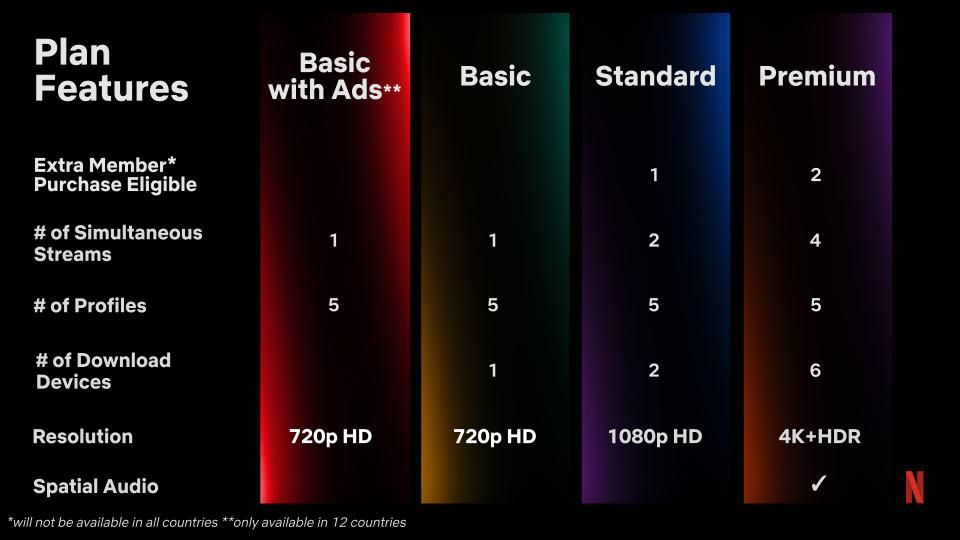Welp, the inevitable demise of password sharing on Netflix seems to be on the horizon. On Wednesday, the company posted more details about how its new system will work, and revealed plans to roll it out around the world.
Customers in the United States won’t be impacted by the changes in the current rollout, but it does give us a slightly clearer idea of the ways in which the company will limit how customers share accounts. It’s a pretty confusing system, so here’s everything you need to know about how Netflix plans to limit account sharing.
What are the new Netflix password sharing rules?
Here’s the basic gist of how the policy is changing. When the new rules take effect, users will have to set a “primary location” where everyone living in that household and using that home’s network can use the same Netflix account. Users will need to pay more if they want to add profiles for people living outside of that home, which Netflix refers to as “extra members.”
Before we go on, it’s important to note that Netflix now has four different subscription plans: Basic with Ads ($6.99/month), Basic ($9.99/month), Standard ($15.49/month), and Premium ($19.99/month). Each plan affects how you are able to share your account. A Standard subscription will support one additional subscription for someone who doesn’t live in your home, and a Premium subscription will let you add two extra members. The two cheaper plans, Basic and Basic with Ads, do not allow customers to add extra members.
So if you want to add someone to your Netflix account who’s living in another place — for instance, a college student — you will have to subscribe to the Standard or Premium plans, and pay the extra member fee on top of the subscription.
How much will Netflix cost with the new password sharing rules?
It’s confusing, so we’ll just explain it in dollar terms. For an additional user to use your Netflix account without living at your primary address, you would pay $15.49 per month for a Standard plan, then an additional monthly fee for that person. At time of publication, the cost to add that extra user in Canada, where the new rules are rolling out, is $7.99 — roughly $6 in U.S. dollars. So it would cost about $21.49 per month, if the U.S. pricing tier is similar to Canada’s.
Only Premium members can add two additional users outside of a household. That would cost $19.99 per month for the base subscription, and roughly another $12 per month for two additional users, for a total of $31.99 per month.
When will Netflix end password sharing in the U.S.?
Netflix has been testing out the new system in Latin America. As of Wednesday, the company said it was ready to expand the rollout to Canada, New Zealand, Portugal, and Spain. There is currently no solid start date for the U.S., but a report from the Wall Street Journal said the streaming service would start ending account sharing in the U.S. in early 2023. We will update this explainer as we hear more.
Will I be able to use my Netflix account while traveling?
Netflix said Wednesday that subscribers will be able to “easily watch Netflix on their personal devices or log into a new TV, like at a hotel or holiday rental.” The company has not explained any further details on traveling with Netflix, so we don’t know whether there will be any conditions on how this feature works.
Will Netflix have a password sharing family plan?
For now, it’s looking like Netflix will not have a formalized subscription marketed as a family plan. There also appears to be no way to use the same subscription in more than three different locations — the home network, plus two extra members.
Here is the full breakdown of what each Netflix plan will offer under the new system:
Image: Netflix
Is Netflix anti-password sharing?
I mean, yeah. With families like mine, Netflix is clearly missing out on money that it would get if we each had our own subscriptions. My adult siblings and I (who all live in different places) are leeching off our parents’ account, but soon, we won’t be able to use that account without paying a lot more. Plus, each account will essentially be locked to a maximum of three different locations. So maybe I won’t be watching the next season of Single’s Inferno after all.

